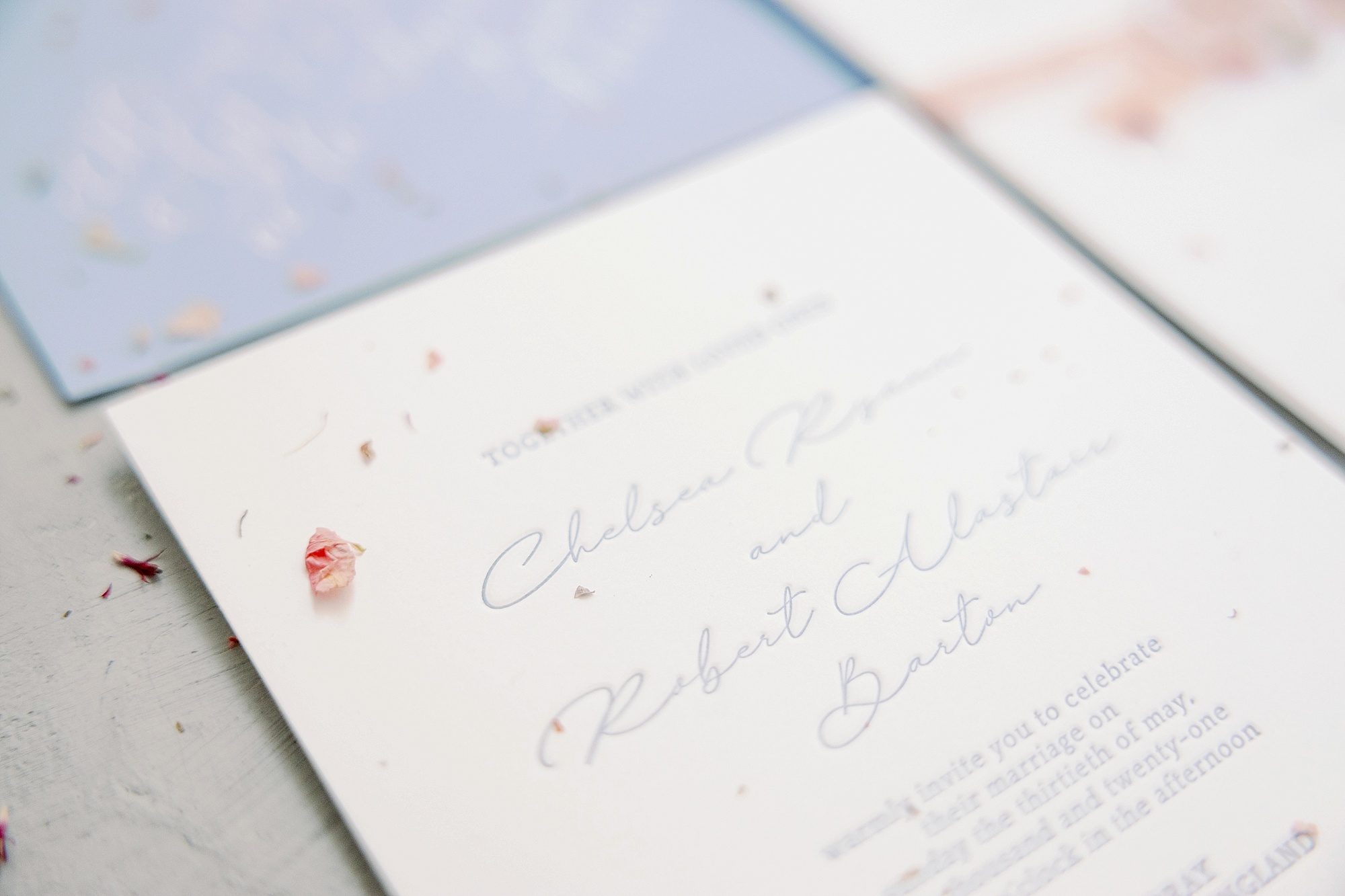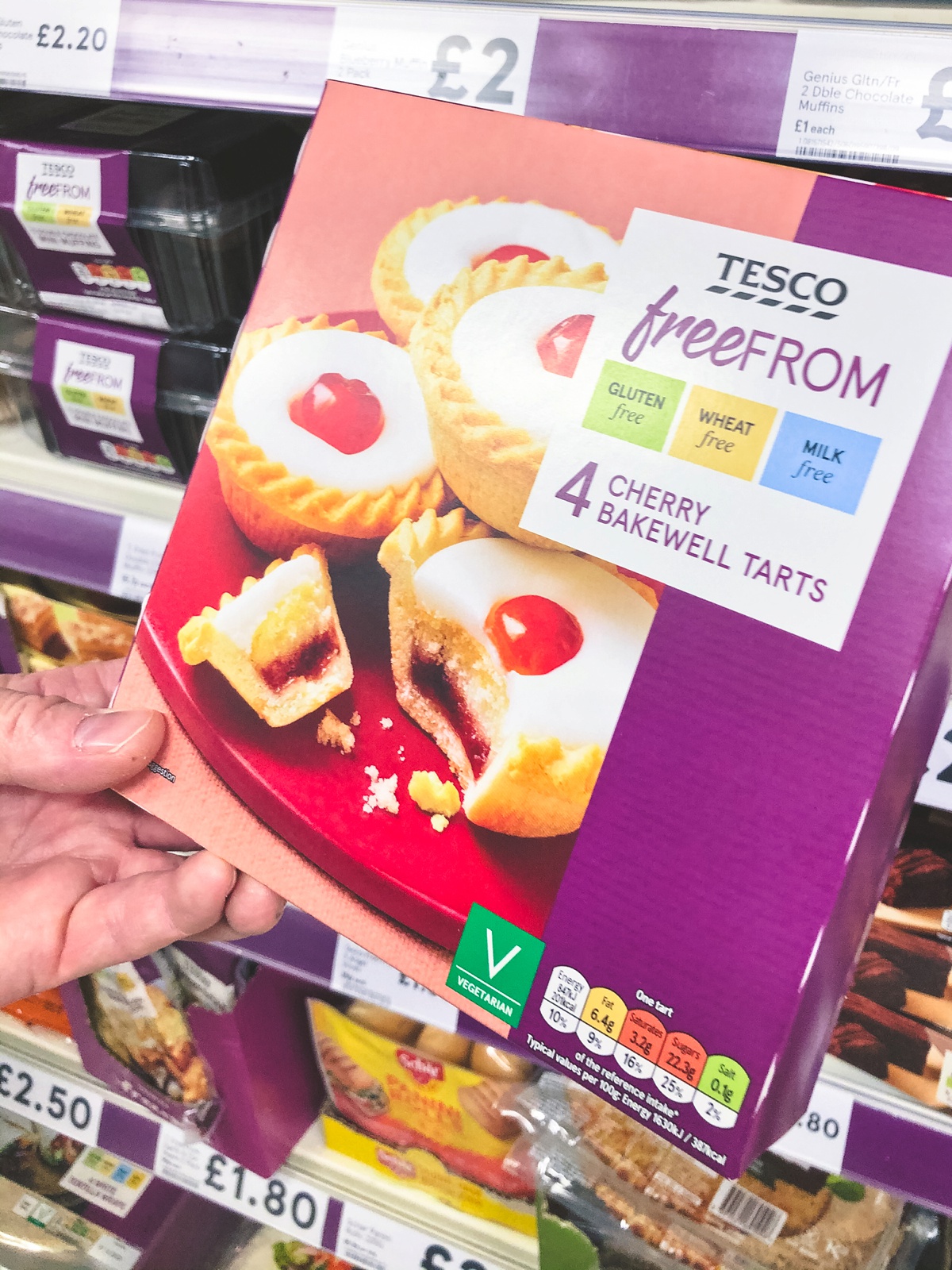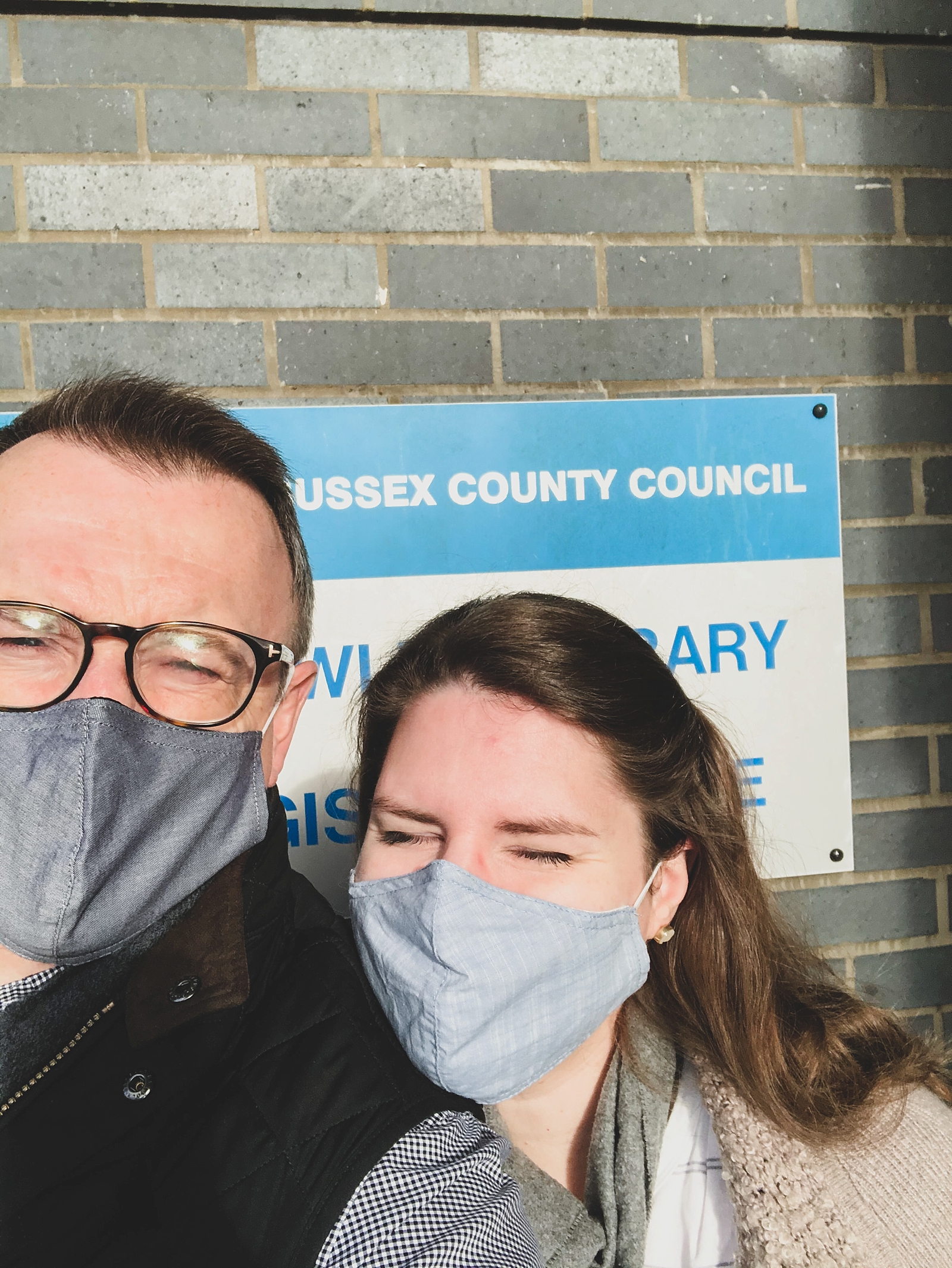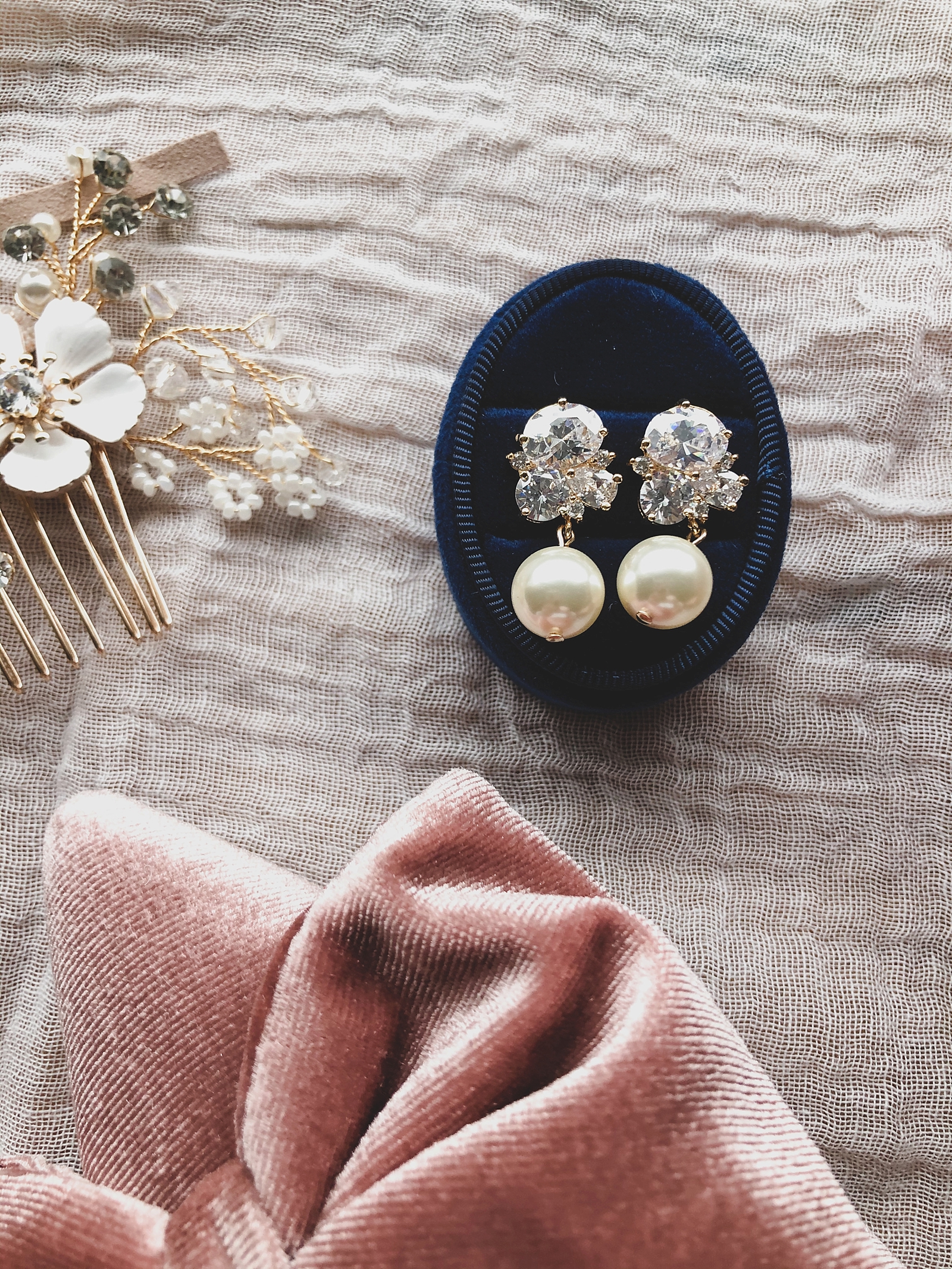It was a whirlwind 2022 with life, health issues, work, and still learning to live in the UK (there literally is always something that is a challenge even almost 3 years later!) ... which all bubbled down to not updating this blog like I had hoped.
So getting your emails, messages, and fizzy beverage thank yous saying that you have benefited from and appreciated the content I have created on "It's a Hard Biscuit Life" has meant a lot, especially since it's been public crickets for over a year.
With that said, my best laid plans are to always keep posting with more useful information. From getting a provisional license to building credit to trying to find a part-time job as a foreign national to navigating the NHS, there have been oodles of articles I've been meaning to spend the time writing up, but the world has inconveniently not invented a 32-hour clock yet.
If you're an American moving to or living in the UK and would love to know more about anything immigration and adapting to a new country, please share in a comment below or write me at hardbiscuitlife (at) gmail.com. That would give me the kick in the trousers to set time aside to write and share!
Alternatively, if you are curious to know what I've been up to, head over to my personal Instagram as that's where I primarily show up online right now (alongside maintaining Pickles Barrington and Juniper McIntyre's kitty Instagram which is ridiculously adorable 24/7).
Thank you again for saying hi, and let's hope 2023 gives me a bit more wiggle room to write!
And every blog post needs a short link list of faves, so here's this one with some affiliated connections (where I might earn a commission or just share a promo code they gave me)! These are some of my tested-and-loved repeat small businesses that make my life easier here in England.
• My Favorite UK Etsy Shops
• My Go-To UK Vitamin Shop: Mobu (use CHELSEA20 for 20% off your order)
• My Go-To All-Natural Bar Soap UK Shop: The Natural Spa (use CHELSEA_LAVERE for 10% off your order)
Spoiler Alert: I'm now legally Mrs B.
Since I was getting a lot of questions about changing my last name (as those close to me know it's been a ridiculously long decade of a year for me as it relates to immigration), this post has been in the making for awhile, but I wanted to make sure I was through the name changing process myself before sharing. So for those fellow newly married American immigrants to the UK who are looking to legally change their surname to their partner's surname, this one is for you.
Disclaimer: Like anything else on the internet, please do your research in case prices or processes have altered. As of writing this, this information from various relevant government websites was accurate, but if you learn anything with immigrating to the UK, it's that things can and will change. For example, when I renewed my passport in January 2021, literally two days later, the Embassy lowered the price by almost £10 for passport renewals! You can imagine my frugal forehead greeting my desk when I saw that. Prices almost always go up, not down. Welcome to the endless anomalies you'll encounter.
Applying for Name Changes in the United Kingdom versus United States
Changing your name overseas is slightly different than if you would change your name Stateside. Where you would normally go to a local Social Security office first and DMV next in your home state, that's not an option in the UK. Via the U.S. Embassy in London, you can't even change your Social Security records until you have an updated passport, so your U.S. passport becomes the key to unlocking everything else in the UK.
When I changed my last name from my birth surname the first time around in 2009, it was a really quick process that took less than a month to receive all my new IDs and documents within the state of Virginia. But in the UK, you'll want to factor in much more time as many things require waiting for another document to change before you can proceed in addition to shipping times and current processing delays (hello, pandemic-ridden DVLA).
While some will ask, do I even need to change the name on my Social Security card? Well, technically not right away like you would have had to from within the U.S., but changing your Social Security will also update your information with the IRS which is especially helpful around tax time. (Unsolicited reminder: Just in case you've stumbled upon this from the ether, as a U.S. citizen, you will forever have to file your U.S. taxes no matter what country you live in unless you renounce your citizenship. That frustration is for another day though.)
How do I legally change my last name in the UK?
The biggest misconception is that changing your name is some complicated legal mess. Guess what? This is one molehill you don't need to turn into a mountain! To make your new name legal, you literally only have to update your name on your government-issued IDs and documents by way of showing government-issued evidence to make that change (e.g., marriage certificate or deed poll). No faff, no courts, no formal application to a random government department. You can decide to legally change your name today if you had the proper documentation to get started. It's literally that easy (and certainly will make you question why it's not harder to give yourself a new moniker given all the other immigration hurdles you've leaped across).Before Getting Started . . .
Whether in Excel or Google Docs, I recommend creating a spreadsheet and listing out everything you need to change for your situation, the date you requested the change, and how to apply for the change (e.g., website link/online, by mail, etc). You may have some following up to do, and you won't want to waste your time, so this spreadsheet is a very helpful personal resource.STEP 1: Change your U.S. Passport
The passport is the key to everything, so this needs to be changed first. You can renew your passport through the U.S. Embassy in London, the U.S. Consulate General in Edinburgh, or the Consulate General in Belfast. (At the time of writing, due to the pandemic, the Northern Ireland and Scotland offices are instructing you go through the London Embassy, but the individual links will give you the most up-to-date information.)
Passport renewal is most always done via a mail-in application. In-person appointments aren't typical for a standard renewal or name change.
I had to personally renew my passport from within the UK before Mr B and I married, so because I applied for my name change with 12 months of my renewal, I did not have to pay again for a new passport. If your renewal falls outside of the 12 months' grace period, the standard passport renewal process is the route you'll take, and you will need to budget for £84 for a new passport (as listed on their website).
What you must submit for a marriage- or civil partnership-related name change:
- Your completed DS-82 renewal application form
- Your current U.S. passport
- Your original marriage certificate or deed poll
- A recent 2x2 U.S. passport-sized photo taken within the past 6 months
- A pre-paid Royal Mail Special Delivery envelope (addressed to you for your passport return)
(For other reasons for a name change and their applicable documents, go to the U.S. Embassy website to see what process best applies to you.)
Personal Experience: When I did pay for my renewal prior to name change, I learned you must obtain a postal money order through the Royal Mail Post Office (or a bank draft) much like the Stateside procedures. When going to the UK Post Office, however, you will need £84 in cash -- no card or personal check accepted -- to purchase this money order. (UPDATE March 31, 2022: You can now also pay online via the government's payment portal.)
If time is of the essence, I do not recommend the Embassy's courier service, DX Delivery, for passport delivery. I had a very challenging time as DX customer service is practically non-existent, and I ended up having to contact the Embassy directly to get the courier to properly deliver my passport. Once I connected with the Embassy's DX contact, he immediately took care of the situation, and my passport was finally delivered the next day before 12pm. Thinking the Embassy's courier would be the quickest, in hindsight, I wish I would have done the usual Royal Mail Special Delivery route.
STEP 2: Change your Biometric Residence Permit (BRP)
Because there is a time limit of 3 months wherein you must notify UK Visas & Immigration (UKVI) of any changes of circumstance (e.g., name change), you need to update your BRP card next. This is a common, but costly process as you need to apply for this change and book another biometrics appointment to have your fingerprints and photo taken again... even if your BRP is months old like mine was.
I paid £180.20 for this new BRP card, and I managed to find a free biometrics appointment scheduled for one month after applying. If you cannot find a free available appointment or are running close to the 3 months' deadline, then budget for an additional £112-£200 for your biometrics at an available UKVCAS service point. (Important Note: You have to apply and pay for your name change application before getting access to scheduling a biometrics appointment.)
While your new BRP will help assist in changing your name on other accounts, your U.S. passport will serve the same purpose if there are government delays in getting your BRP card with your updated name on it. Once you get your new passport, keep on going with the name changing with the general checklist below!
Take What You Need: A General Checklist for Accounts to Update
• Passport
• Biometric Residence Permit
• U.S. & UK Banking/Financial/Retirement Accounts
• Social Security
• GP/Doctor Offices (** when you notify your GP, your NHS account will also be updated)
• Your Employer
• HMRC (** your National Insurance information will then be updated through this)
• U.S. & UK Credit Cards
• UK Driving License
• Car Insurance and Registration
• Utilities (e.g., phone, water, gas/electric)
• Travel-Related Accounts (e.g., airline booking/loyalty programs, AirBnb, taxi apps, etc)
• Online Retail Accounts (e.g., Amazon, Netflix, Etsy, etc)
• Online Payment Accounts (e.g., PayPal, Venmo, etc)
• Local Services (e.g., library, council tax, etc)
• Student Loans
• Vet Office and Your Pet's Microchip
• Rental/Letting or Mortgage Accounts
• U.S. Voter Registration and UK Electoral Roll (if dual citizen/Scotland/Wales applicable)
• Your Will or Living Trust
After Your Name Change Success
Enjoy, practice that shiny new signature, update your email settings/social media accounts if you haven't done so already, and start building a presence in the UK with your new legal name. Now onto more important things: buy a souvenir plot of Scottish land and see if you can convince your American folks that you are really indeed a Lord/Lady... because you're living your best British life now, obviously.If You Wish to Donate a Thank You
I wrote this guide because immigration is complicated enough without adding onto the whole marriage or name changing element. Every little helping hand can be a breath of fresh air -- I know I wish I had it!
It took quite some time to put all of this information together, so if you're able and found this guide helpful for your own journey, treating me to a fizzy carbonated beverage certainly won't be turned away and would be greatly appreciated!
Years ago, I learned about the Valais Blacknose because of a BBC video clip about a Scottish farmer who brought the breed to the UK from Switzerland. They’re one of the most expensive breeds because, well, just look at them! But because of this, I never thought I’d ever get to see one in person let alone interact with them!
That all changed when I went to Google and started searching for things to do in Northamptonshire while Mr. B and I were helping friends with kitty sitting. Lo and behold, a 15 minutes' drive would bestow upon a cute overload dream made reality at The Sunshine Farm.
WHO ARE THE VALAIS BLACKNOSE?
Literally called "the cutest sheep in the world," the Valais Blacknose are unmistakably one-of-a-kind. "Are they really real?!" is a common question when one sees a photo of them. Their twisty horns, curly wool, teddy bear faces, puppy dog personalities, little black knee patches/boots, and sweet temperaments make it a no brainer why these are well-loved amongst animal lovers everywhere. This breed was first brought to the UK in 2015 according to the Valais Blacknose Society and continues to grow in popularity... so much in popularity that the top notch sheep tend to come at a high price.
If Mr. B and I can find a house with some land in a couple of years, we are 100% going to try to get a mini-flock of more affordable "perfect in our eyes" Valais Blacknose as pets. That's how much I love this breed! It's about time we put Mr. B’s agricultural background and saving baby lamb experiences into good use!
VISITING THE VALAIS BLACKNOSE CREW AT SUNSHINE FARM
Once we arrived, we were greeted by farm staffer, Molly, who encouraged my very much grown-up enthusiasm every moment of our visit. My American show of joyful emotion definitely was not quelled here. We went directly to the Valais Blacknoses' personal paddock and immediately were introduced to the boys: Herbert, Horatio, Hercules, and Hector. (I came to have an extra soft spot for Herbert because he's the only one without the iconic black knee patches which in the sheep world plummeted his breeding value... which makes him absolutely perfect in my eyes. I think Herbie knows I was smitten with him because he was the most affectionate with me!)
These sheep are still young chaps and are already living their best woolly life with their own personal B&B kitted out with toys, bottomless hayrack, and more. Basically these sheep are spoiled, and they distinctly know it.
To prep for the walk, Molly herded Herbert and Hercules into the side pen to clip on their personalized walking harnesses which only supported my theory that the Valais Blacknose are just giant puppy dogs disguised in sheep bodies. (This theory is later confirmed.)
Until the bucket came out. The bucket was magical. The bucket was power. The bucket had unlimited snackies to bribe giant Herberts into movement. It confirmed the puppy dog theory as his little black boots made their big steppy steps towards the bucket (or rather, into the bucket).
CUDDLING WITH THE VALAIS BLACKNOSE
After the walk around the farm which was about 20-30 minutes, we had some cuddle time with all four fluffy boys and gave a few extra grainy snacks to each. Even after the treats were long gone, the sheep still stuck around, still wanted to be pet, and still wanted to be doted on. Being on the receiving end of their affection was healing. It filled this tired and anxious soul with so much light. 2021 has been a flippin' long decade of a year, but one dose of this micro-flock was just what I needed.
Molly was lovely to answer all of my incessant questions about the sheep, the farm, and everything about how they help adults with learning disabilities on weekdays and open up to the public on weekends. When you meet good humans who love animals as much as you do, they make an impression, and I knew I wanted to take the time to properly write up my experience.
The hospitality didn't end there as once we left the beautiful Valais Blacknose boys to their own devices, we made our way around to say hi to the rest of the farm animal residents and had a thorough hand washing in the restrooms as tea and cake awaited us in the garden patio area. When we're back in the Northampton area again, Mr. B already knows that wasn't our last visit. His American wife very much loves these sheep.


THE SCOOP ON THE SUNSHINE FARM
AVAILABLE TIMES FOR A VALAIS BLACKNOSE SHEEP WALK
Mondays-Saturdays from 4:30pm-6:30pm and Sundays from 1:30pm-5:00pm
PRICING
It is £25.00 for a sheep walker's ticket that includes cuddles with the Valais Blacknose boys, access to see the other animals, and tea and scones/cake afterwards. (Gluten-free and vegan options are available with advance notice.) Alternatively, it is £10.00 for a spectator ticket for any adults who may not want to walk the sheep, just want a cuddle, or have been summoned by their spouses to take photos of them walking the cuteness (obviously).

HOW TO BOOK A SHEEP CUDDLE & WALKING SESSION
You need to book in advance, and this can be done by phone at 07720 273055, direct message on their Facebook page, or by email: manager@sunshinefarm.uk. Payment is made via bank transfer.
LEARN MORE ABOUT THE SUNSHINE FARM
The staff have future plans to have a website, but at this time, you can learn more about the farm and see updates from their Facebook page.
HOW TO FIND THE SUNSHINE FARM
Since the boutique petting farm and Valais Blacknose cuddle experience are newly opened as of earlier this year, most GPS systems/sat navs haven't quite picked up the Sunshine Farm name and location just yet. Type in the below postcode, and once on Holcot Road, be on the lookout for the sunset-colored "The Sunshine Farm" signs by the roadside. Free parking is available in their gravel-paved car park.Holcot Road, Brixworth, NN6 9BN
Much like the English language itself, there's a lot that makes sense alongside oodles of stuff that makes zero sense when it comes to the British baking world as translated by an American baking. But because the home baking culture is so much a thing here in the United Kingdom (hello Great British Bake-Off), there is an entire world to discover when it comes to supplies, ingredients, and creative baking accoutrements. We are talking high end bakery cakes and pastries being made by amateurs in everyday kitchens as well as immaculate grocery store bakery cakes, and it's inspiring. While this wealth of options is great for a perfectionist like myself, a part of me mourns the reality that hilarious Cake Wrecks are an invisible part of British society... and gives me some anxious flashbacks of my obsessive "must get a gold star" childhood.
One important anthropological note is that, generally speaking, food is cheaper and available in more size variety (e.g., smaller than "normal" packages for smaller cabinets/single households) here than the States. It's an odd phenomenon especially since the UK food system relies on a lot of imported food from Europe, Asia, and Africa, but it means that baking really can be more affordable and accessible for people.
So in my quest to learn and conquer British baking and to appease curious minds, I have gathered my own translation guide in this world of home baking across the pond. It is an evolving guide and will be updated as I figure things out. A cooking-specific translation guide is also in the planning, but in the meantime, hope you enjoy/get a laugh out of this starting point!
One important anthropological note is that, generally speaking, food is cheaper and available in more size variety (e.g., smaller than "normal" packages for smaller cabinets/single households) here than the States. It's an odd phenomenon especially since the UK food system relies on a lot of imported food from Europe, Asia, and Africa, but it means that baking really can be more affordable and accessible for people.
So in my quest to learn and conquer British baking and to appease curious minds, I have gathered my own translation guide in this world of home baking across the pond. It is an evolving guide and will be updated as I figure things out. A cooking-specific translation guide is also in the planning, but in the meantime, hope you enjoy/get a laugh out of this starting point!
INGREDIENTS FOR BAKING
[U.S. English = UK English, in alphabetical order]
• 2% milk = semi-skimmed milk
• All-purpose flour = plain flour
• Baking soda = bicarbonate of soda
• Bread flour = strong flour
• Canola oil = rapeseed oil
• Cider = cloudy apple juice // UK cider is always alcoholic which you may or may not want in recipes!
• Cordial = liqueur // UK cordial is not alcoholic and is a concentrated syrup meant to be diluted with added water. This kind of cordial is also called "squash" here, but I can't even get into that language spiral right now. We would be here too long. But for baking, go straight to the alcohol section and look for the liqueurs.
• Cornmeal = polenta, masa harina
• Cornstarch = corn flour
• Corn syrup = golden syrup // While you'll find recipe conversions that say this is an equivalent, it's important to note that corn syrup has nothing on golden syrup. I feel like it's totally different in taste and quality; the only similarity is color and viscosity. I'm very Team Golden Syrup!
• Cream cheese = soft cheese // Philadelphia is a popular brand in the UK, too!
• Golden raisins = sultanas
• Graham crackers = digestive biscuits // These don't have the same flavor to me, but in recipes, they can be interchanged as a decent substitute. With that saying, I have found Morrison's gluten-free golden syrup breakfast biscuits taste just like graham crackers, so I'll be using them for making sweet crusts! A friend also mentioned Lotus Biscoff as another yummy perfect alternative.
• Half and half = single cream
• Heavy (or whipping) cream = double cream
• Honey = runny or clear honey // There are so many widely available common types of honey such as set or spreadable honey (which is opaque and pale yellow) and cut comb honey (chunk of honeycomb in clear honey). For general baking, it'll be runny honey as your sweetener.
• Jelly = seedless jam
• Maraschino cherries = glacé cherries
• Molasses = black treacle // And it's in the most inefficient tinned can ever. It's literally like a small can of paint that will never close properly again because the syrup gets. every. where. See below.
• Natural or raw sugar = Demerara sugar // This is not the same as brown sugar though I've seen it listed as such in UK Google searches. The soft "packed" sugar we know as light or dark brown sugar is also called light or dark brown sugar here.
• Non-fat milk = skimmed milk
• Peanuts = monkey nuts
• Pits = stones // As in peach or avocado.
• Powdered (or confectioners') sugar = icing sugar
• Pumpkin pie spice = mixed spice
• Self-rising flour = self-raising flour
• Semi-sweet chocolate = dark chocolate
• Shortening = solid vegetable fat
• Shredded coconut = desiccated coconut
• Slivered almonds = flaked almonds
• Sour cream = soured cream
• Sprinkles = hundreds and thousands, vermicelli, sugar strands // Everyone knows what sprinkles are, but you'll find grocery stores are quite diverse in how they label them.
• Superfine sugar = caster sugar
• Whole wheat flour = wholemeal flour
BRITISH SUBSTITUTES FOR AMERICAN INGREDIENTS
Applesauce - The well-known British Bramley Apple Sauce is not even close to American-style smooth applesauce. It's not the same texture or flavor needed if you use applesauce as a butter/oil substitute for baking. What you want to look for is an apple purée which I've only seen online as of writing this, not in the local shops. You will need to either make your own from scratch, pack some in your suitcase upon visiting across the pond, or order from an online American import shop (e.g., American Grocer).
Cool Whip (or stabilized whipped topping) - While it was never a great healthy option with all of its artificial ingredients, Cool Whip is sometimes needed in some recipes for a stabilized whipped cream. Since Cool Whip doesn't exist in the UK, what's an American to do?! You can either make from scratch or buy kind of similar Bird's Dream Topping (add a few teaspoons of powdered sugar and a drizzle of vanilla extract for a copycat taste!).
Instant pudding mix - Beyond the word differences, there's a reason I packed a dozen boxes of organic vanilla instant pudding mix from Whole Foods for my "secret ingredient" in my cookies and cakes when I first moved. It will always be something I bring back when visiting the States! The most similar British product is Angel Delight or Bird's Instant Custard Powder Sachets. I have tried the former, and it doesn't quite bake into cookies the same way American instant pudding does. It's the wild west with Bird's as I haven't experimented with it yet. Because of its long shelf life, you can also find instant pudding mixes in online American import shops, but I found it's really not cost-effective for a baking dish here and there unless you grab some on sale.
Yellow cake mix - Once upon a time, I used boxes of yellow cake mix for a starting base for a lot of my cakes. Sadly, it doesn't exist here by this name. They say a traditional British sponge cake mix is similar, but it's still not quite the same in texture or flavor. I've found yellow cake box mixes on online American import shops, and for the homemade kind, I have this recipe for yellow cake mix (without any nasties) bookmarked.
TYPES OF SWEETS & BAKED GOODS
• Buns = baps // As in bread for the burgers.
• Biscuits = savory scones // There is much international division on this issue... hence this blog's name! Best just accept the lack of gravy and move along.
• Cake = sponge // This varies, of course, depending on recipe, but can cause confusion if you're thinking about washing dishes when someone asks if you can make a sponge.
• Cake batter = cake mixture
• Candy apple = toffee apple
• Cooked or instant oatmeal = porridge
• Cookie dough = biscuit mixture
• Cookies = biscuits
• Cotton candy = candy floss
• Crackers = water or cheese biscuits // British crackers are typically known as a traditional Christmas party favor, so that's why you might get weird looks asking for crackers in July, but people here do know the "cracker" for cheese/snacking. For commercial packaging, I found "crackers" more commonly labeled on British-Asian snacks like prawn or rice crackers.
• Cupcakes = fairy cakes // Everyone knows cupcakes though. Mr. B swears they're also called buns, but I just shake my head in non-solidarity. I've found American cupcakes are more soft and spongy than British cupcakes that tend to have a crumbly texture... which has led me to using pre-made gluten-free American cake mixes for cupcakes.
• Dessert = pudding or puds // Literally anything can be a pudding, even a savory thing from Yorkshire. It will cause perpetual confusion.
• English muffin = crumpet // Similar, but not the same. Crumpets are more buttery and airy with its open top holes. You will find "muffins" as in the English muffin in some grocery stores, but trying to explain that it's not a blueberry muffin that you're seeking is a weird one.
• Gingersnap cookies = ginger nuts // They absolutely have no nuts in them whatsoever, but are called this because the original British cookie had a marketing slogan called "as hard as a nut" from the 1840s.
• Granola bars = flapjacks // This one is confusing, but you'll see they resemble chewy granola bars, not pancakes... English pancakes resemble crêpes, and the cycle of whut begins.
• Hard candy = boiled sweets
• Jello = jelly // As in the fruity gelatin.
• Lava cake = fondant // Not to be confused with that stiff icing used to decorate cakes because that's also known as fondant here.
• Pie crust = pastry case
• Popsicle = ice lolly
• Pudding = custard // As in instant or cooked. It's a similar product, but different flavors.
• Scones = no equivalent // The American sweet scone just doesn't have a traditional British buddy. Different shape, different flavors, sometimes different textures. At the risk of sounding unpatriotic, I personally do prefer the British scone. If you haven't had one yet, you'll know why when you do.
• Sheet cake (or any dessert made in a square/rectangle pan) = traybake
BAKING SUPPLIES
• Aluminum foil = tin foil
• Baking pan = baking tin
• Broiler = grill // Not to be confused with a BBQ in the backyard. It's still the oven setting!
• Canned (anything) = tinned (anything)
• Cookie sheet = baking tray or sheet
• Cupcake liners/baking cups = cupcake/baking cases
• Paper towels = kitchen roll
• Pitcher = jug
• Plastic (or Saran) wrap = cling film
• Toothpicks = cocktail sticks
• Parchment paper = greaseproof or baking paper
US - UK MEASURING DIFFERENCES
I should have a section on UK-US baking measurements because these are different as well, but honestly, I'm not a math person, and I'd fail miserably trying to explain cups, milliliters, fluid ounces, et cetera. Going from the imperial to the metric system is not for this gal. Short story: British baking is done mostly by weight, not volume.So I offer this US-UK measurement chart from Fab Flour that does a better visual job at conversions. I will say I have incorporated a baking scale into our kitchen since so many British recipes use it, and I love it! I still shipped over my American measuring spoons and jugs, but I now have more in my baking arsenal.
GLUTEN-FREE BAKING FAVORITES
Since I have Celiac Disease, I'd be remiss to not include a mini-section about gluten-free baking. In the UK, you'll find GF ingredients in the "Free From" aisles at grocery stores. Oftentimes, gluten-free is included with dairy- or nut-free goods, so it's practically categorized as free-from though it's dominantly gluten-free products.
Gluten-free, in general, is incredibly common in the UK, and it's one of my favorite things about the food culture. People don't look at you weird when asking for GF, and most everyone takes it very seriously when you order at a restaurant. I have most always been able to order a gluten-free dessert of some kind at a pub, and it's a glorious happy Celiac moment. I can even find loads of pre-made GF grocery store cakes and desserts! Sadly, it tends to be basic flavors and not the super fun cakes... but hey, it's still an upgrade from American offerings.
Just like America, though, some gluten-free products are not created equal. Nothing compares to Thomas Keller's Cup4Cup gluten-free flour in the U.S. for me, and I did learn that Lakeland (a UK home store) imports it in, but I still can't justify the £15.99 price tag when there is always some kind of standard gluten-free flour available at every UK grocery store (hello, land of all things baking with a large Celiac population), but there are textural differences.
As of now, Freee by Doves Farm is my preferred (found at Tesco, Sainsbury's, and other main grocery stores with exception to Marks & Spencer), though I still find it sometimes grainy in some of my baked goods. And coming in last, M&S brand gluten-free flour was the worst as it was felt gritty in my cakes and did not pass the non-Celiac tastebud test courtesy of Mr. B.
While "from scratch" mixed gluten-free flours will always be the best, alas, my search continues for the perfect commonly accessible and affordable basic pre-mixed gluten-free flour in Great Britain.
FAHRENHEIT TO CELSIUS OVEN TEMPERATURE CONVERSIONS
There's no need to reinvent the wheel. This oven temperature conversion table PDF by Doves Farm (my UK gluten-free flour choice at the moment) is my permanent go-to because my brain cannot manage converting American recipes to Celsius let alone converting Celsius with Fan Oven which is my current kitchen appliance life right now. The "fan oven" is much like the recently popularized air fryer in the States. I love it for cooking, but for baking, it's still a "keep a close eye" situation to not let my bakes dry out.Some British ovens even have a basic "Gas" number, and other ovens are regular ole convection heat like what most American ovens are. Make your life easier, have fewer over-baked desserts, and just save that conversion chart.
POPULAR BRITISH BAKES IN AMERICAN TERMS
If the Great British Baking Show (or also known as The Great British Bake Off or GBBO in the UK) has taught us anything, there are some very much have well-loved flavor combinations for British tastebuds.
• Eton Mess - Piled dessert of broken meringues, strawberries, and cream
• Banoffee Pie - Cookie-like crust dessert filled with bananas, caramel (or toffee), and cream and sometimes served with a chocolate topping
• Bakewell Tart - Dessert with flaky crust, cherry jam, and almond-flavored custard (aka frangipane) topped with silvered almonds and a maraschino cherry
• Trifle - Layered dessert made of pound or vanilla cake, vanilla pudding, fresh fruit, and whipped topping
• Jam Roly-Poly - Rolled cake with strawberry or raspberry jam and served with custard
• Battenberg - Long pink and yellow checkered almond cake composite with apricot jam and marzipan blanket
• Victoria Sponge - Naked yellow cake with strawberry or raspberry filling and whipped cream and dusted with powdered sugar
• Jaffa Cake - Cookies with orange jelly centers covered in dark chocolate
Fellow expats, have anything to add to this baking glossary? Share in a comment below! I'd love to hear them!
"Twenty years from now you will be more disappointed by the things you didn’t do than by the ones you did do. So throw off the bowlines, sail away from the safe harbor. Catch the trade winds in your sails. Explore. Dream. Discover." - H. Jackson Brown, Jr.
The Great British Bucket List
1. Find a fossil on the Jurassic Coast. (5.17.21)
2. Gawk at Daphne du Maurier’s house in Cornwall. (5.12.21)
3. Start and follow through with writing a book.
4. Walk to the beach in the rain. (1.28.20)
5. Go on first post-divorce date and not freak out. (2.12.20 // Post Note: So I'd say that went well!)
6. Eat Mexican Mess in Brighton. (No longer available)
7. Volunteer at the local Cats Protection charity shop. (1.9.20)
8. Glimpse the white cliffs of Dover.
9. Visit Jane Austen’s house in Chawton. (7.10.20)
10. Learn how to drive a car with manual transmission. (Tried in 1.2021, and I'm a lost cause!)
11. Bake a Victoria Sponge cake.
12. Find a gluten-free Chelsea bun.
13. Visit the Scottish Highlands. (12.30.19)
14. Get a UK phone number. (11.25.19)
15. Join board game night at a pub. (2.4.20)
16. Find a way to like tea. (1.20.20)
17. Take a gardening workshop. (2.8.20)
18. Have a Turkish bath in Harrogate. (6.28.21)
19. Eat cheddar cheese in Cheddar.
20. See puffins at Bempton Cliffs.
21. Collect sea glass on Seahawks Beach.
22. Wander in the Hundred Acre Wood. (3.7.20)
23. Eat Thai food in a bookshop in Hastings.
24. Visit the only desert in England.
25. Drive on the opposite side of the road and survive. (In progress)
26. Try to learn the various regional accents and from where they come. (Ongoing!)
27. Attend an event that requires wearing a fascinator.
28. Find and pick a local fruit and make something with it. (6.4.20)
29. Love on the “unwanted and abandoned” rescue donkeys on Isle of Wight. (1.21.20)
30. Ride the Hogwarts Express. (Seen 1.4.20)
31. Go horseback riding in Reading.
32. Pretend to be in a storybook in the Cotswolds. (7.25.20)
33. Go star gazing. (1.1.20)
34. Stroll down Mermaid Street in Rye. (11.16.21)
35. Figure out Sunday Roast and have one. (1.7.20)
36. Explore the Yorkshire Moors and Dales. (6.28.21)
37. Visit the free-roaming wild reindeer in the Cairngorms National Park.
38. Do Canterbury, finally.
39. See a Shakespeare play at The Globe.
40. Experience a local cinema. (2.16.20)
41. Have tea with naughty sheep in Scotland. (6.10.22)
42. Do something out of the norm for New Year’s Eve (aka not fall asleep on the couch). (12.31.19)
43. Get a local Brighton library card. (12.5.19)
44. Find a personal local cause and donate. (12.16.19)
45. Stay in an adorable pre-19th century cottage.
46. Go to a flower show.
47. Take Pickles Barrington on a train ride. (12.20.19)
48. Buy a used bicycle for local riding.
49. Keep track of at-home cooking successes. (Ongoing!)
50. Just live in every moment. (Ongoing!)
Non-Original Bucket List Things Equally British and Noteworthy
51. Get married to my Mr. B in a 16th century English walled garden. (5.30.21)
52. See the Cobb in Lyme Regis and pretend to be a Jane Austen character in Persuasion. (5.17.21)
53. Visit Tintagel Castle of Arthurian legend. (5.14.21)
54. Witness the retirement home of Sherlock Holmes in East Dean. (4.7.21)
55. Feed a baby lamb and all the sheeps. (4.8.22)
56. Get a UK driver's license. (In progress)
57. Find and eat a gluten-free Cornish pasty. (5.13.21)
58. Frolic through Brontë Country. (6.27.21)
59. Explore Beatrix Potter's farm. (9.20.22)
This post will be frequently updated with the date as each one gets accomplished. Here’s to adventure and trying new thingsin 2020 andbeyond!
For those who haven't had to live through nine consecutive and nonconsecutive months of stay-at-home lockdown orders, who can't even remember when your legal wedding day or future anniversary is because it has changed so many times, or who have had to navigate immigration protocols and move across an ocean when the world was closed, it's safe to say that your spirit is chipped.
As someone whose entire career for the last 12 years has been the wedding industry and as someone who has also been married once before, I have gotta say that dang, England, getting married here is insanely more complicated than it is back home. I'm not even talking about the visa process for a foreign national like myself. I'm strictly speaking about the logistics of saying I Do in ole Blighty.
Mr. B and I were supposed to have our "make it legal" wedding ceremony on February 9, 2021 (with our more meaningful wedding day with no more than 22 of our loved ones in May and a Virginia wedding picnic for the American side in calmer pandemic times), but due to the current lockdown, it was canceled. There is still hope though as our ceremony is rescheduled for March with another backup date in April.
As I full-heartedly believe everything happens in its perfect timing, it's still a bit of downer, especially knowing that it would have been beyond easier and far more affordable to tie the knot in Virginia. In a non-COVID world, that's exactly what would have happened. Mr. B could have entered the States as a visitor (no special visa even needed!), we could have gotten hitched at the courthouse, and then had separate memorable celebrations with loved ones in both UK and U.S. as most international couples are wont to do.
While I'm dreamily smitten with the idea that I get to marry my best friend in the land of Jane Austen, my more realistic, practical side is grumpy that we weren't even able to consider the option of a U.S. ceremony because of the current pandemic-related travel ban against British citizens.
Alas, there are things out of our control, I love our love story even with all the pivots, so instead, I'm going to share exactly how getting married is different here in England compared to Virginia because the what the huh moments are real.
Difference #1: The Marriage License
In my hometown of Virginia Beach, Virginia, acquiring a marriage license is easy. You go to the courthouse, pay a small fee, and sign some paperwork. Every city has different requirements and validity terms, but a Virginia license is valid for 60 days. Showing an official divorce decree is not even required. You can go get hitched on the same day at the same courthouse if you want -- no appointments or witnesses needed!
In England, the equivalent of a marriage license is "giving notice." This appointment must be made at least 28 days before your scheduled wedding ceremony date at a Register Office -- a dedicated local government office that handles birth, death, and civil partnership/marriage records.
At the giving notice appointment, you tell the local government when and where you’re getting married, give your identification documents, answer a few questions about your spouse-to-be, and then after 28 or 70 days, you are approved to get married for up to one year.
(Because I entered the country on a government-issued fiancée visa and already went through a vetting process, it was only 28 days for our approval to marry. 70 days is for those who require more extensive background checks or immigration reviews.)
Your giving notice in England is venue specific, so no changing venues after you do this, or you have to give notice all over again. During our appointment, I asked about COVID couples having to cancel or reschedule to a new venue, and our local county said they have been able to sometimes waive the fee if venue had to be switched. It won’t be our situation, but because giving notice is a ridiculously expensive process, it hurt my heart for the couples whose weddings get postponed or canceled.
It also bears mentioning that having religious ceremonies have a few different shades of "giving notice" rules to follow depending on if it's a Church of England ceremony or another house of worship. At least when it comes to weddings, there is a very clear separation of church and state in the UK which is an interesting and different cultural aspect than what I've experienced in America.
Difference #2: Your Officiant
Hold all of that with English weddings. In England, you have to have a government official (or registrar) from the register office to make your marriage legal in the UK. You can have a celebrant (aka officiant) or someone more personal to you leading the ceremony, but the registrar still needs to be present or you need to have a separate legal ceremony before your planned wedding day.
Difference #3: Where You Can Marry
Difference #4: How Much Everything Costs
If you wanted to have a licensed Virginia officiant conduct your wedding at your preferred location, their fees can be anywhere from $0 to $1,000. Depending on if it's a personal friend to an in-demand local favorite, pricing varies, of course. To receive certified copies of your Virginia marriage license and certificate (which are together on the same document) after the wedding, you would pay $2.50 per copy.
All Register Office ceremony fees include two official statutory marriage certificates, but if you need additional copies, it would be £11 each (about $15).
Final, More Succinct Thoughts
So, England, I repeat, dang, why is so much more complicated to get married here?!Our Wedding Details in the PhotosWedding Ring: Brilliant Earth and Blue Nile • Shoes: ASOS • Bridal Accessories: Emilia Rae via Etsy • Velvet Ring Box: Your Heart's Content via Etsy
































Social Icons